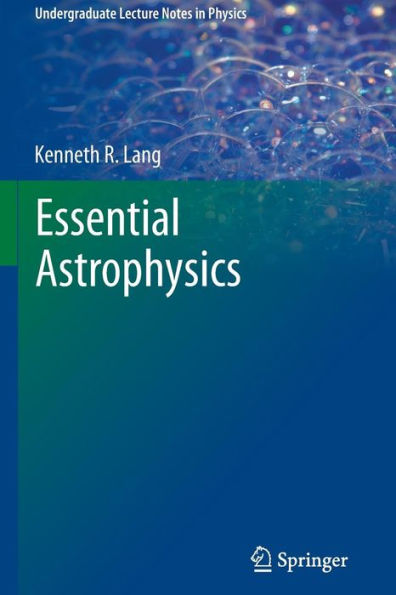This one-semester overview will be enjoyed by undergraduate students with an interest in the physical sciences, such as astronomy, chemistry, engineering or physics, as well as by any curious student interested in learning about our celestial science. The mathematics required for understanding the text is on the level of simple algebra, for that is all that is needed to describe the fundamental principles.
The text is of sufficient breadth and depth to prepare the interested student for more advanced specialised courses in the future. Astronomical examples are provided throughout the text, to reinforce the basic concepts and physics, and to demonstrate the use of the relevant formulae. In this way, the student learns to apply the fundamental equations and principles to cosmic objects and situations. Astronomical and physical constants and units as well as the most fundamental equations can be found in the appendix. Essential Astrophysics goes beyond the typical textbook by including references to the seminal papers in the field, with further reference to recent applications, results, or specialised literature.
This one-semester overview will be enjoyed by undergraduate students with an interest in the physical sciences, such as astronomy, chemistry, engineering or physics, as well as by any curious student interested in learning about our celestial science. The mathematics required for understanding the text is on the level of simple algebra, for that is all that is needed to describe the fundamental principles.
The text is of sufficient breadth and depth to prepare the interested student for more advanced specialised courses in the future. Astronomical examples are provided throughout the text, to reinforce the basic concepts and physics, and to demonstrate the use of the relevant formulae. In this way, the student learns to apply the fundamental equations and principles to cosmic objects and situations. Astronomical and physical constants and units as well as the most fundamental equations can be found in the appendix. Essential Astrophysics goes beyond the typical textbook by including references to the seminal papers in the field, with further reference to recent applications, results, or specialised literature.

Essential Astrophysics
635
Essential Astrophysics
635Paperback(2013)

Product Details
| ISBN-13: | 9783642359620 |
|---|---|
| Publisher: | Springer Berlin Heidelberg |
| Publication date: | 05/24/2013 |
| Series: | Undergraduate Lecture Notes in Physics |
| Edition description: | 2013 |
| Pages: | 635 |
| Product dimensions: | 6.10(w) x 9.25(h) x 0.06(d) |
